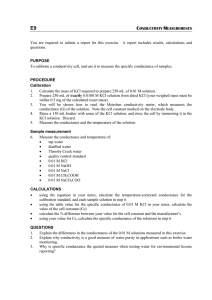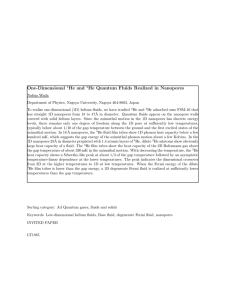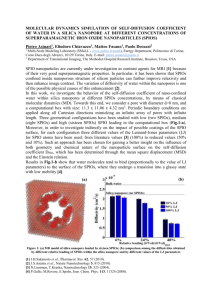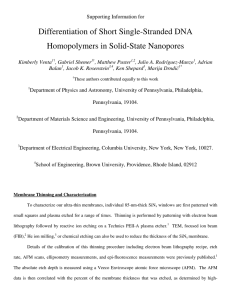Additional file 1 - Nanoscale Research Letters
advertisement
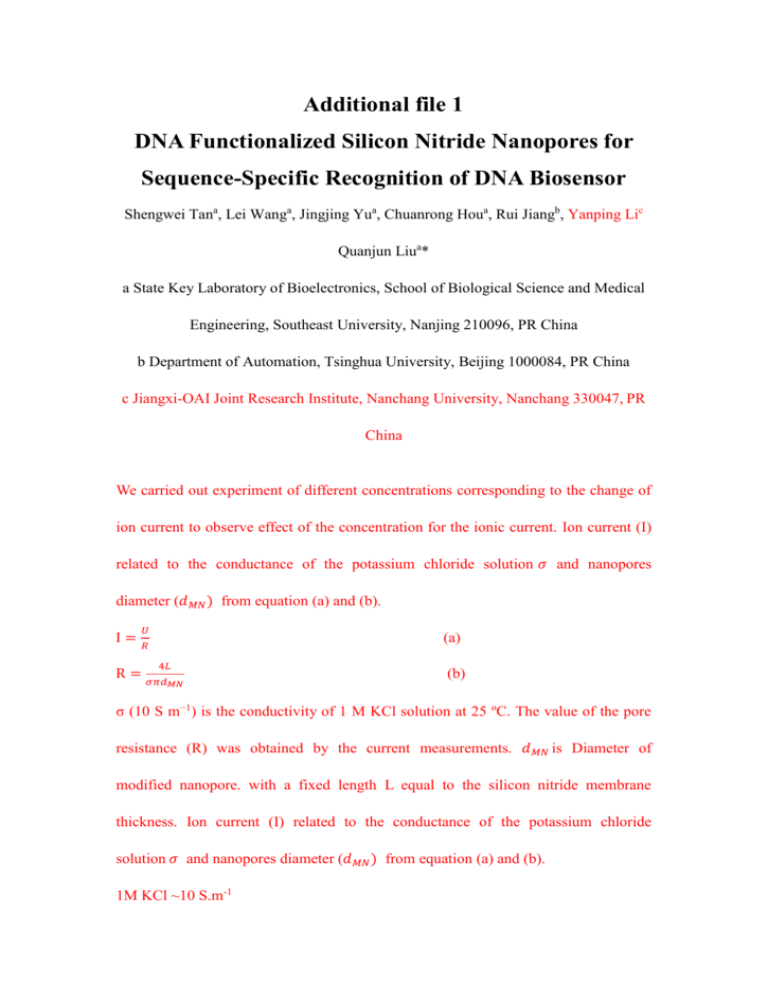
Additional file 1 DNA Functionalized Silicon Nitride Nanopores for Sequence-Specific Recognition of DNA Biosensor Shengwei Tana, Lei Wanga, Jingjing Yua, Chuanrong Houa, Rui Jiangb, Yanping Lic Quanjun Liua* a State Key Laboratory of Bioelectronics, School of Biological Science and Medical Engineering, Southeast University, Nanjing 210096, PR China b Department of Automation, Tsinghua University, Beijing 1000084, PR China c Jiangxi-OAI Joint Research Institute, Nanchang University, Nanchang 330047, PR China We carried out experiment of different concentrations corresponding to the change of ion current to observe effect of the concentration for the ionic current. Ion current (I) related to the conductance of the potassium chloride solution 𝜎 and nanopores diameter (𝑑𝑀𝑁 ) from equation (a) and (b). I= 𝑈 (a) 𝑅 4𝐿 R = 𝜎𝜋𝑑 𝑀𝑁 (b) σ (10 S m−1) is the conductivity of 1 M KCl solution at 25 ºC. The value of the pore resistance (R) was obtained by the current measurements. 𝑑𝑀𝑁 is Diameter of modified nanopore. with a fixed length L equal to the silicon nitride membrane thickness. Ion current (I) related to the conductance of the potassium chloride solution 𝜎 and nanopores diameter (𝑑𝑀𝑁 ) from equation (a) and (b). 1M KCl ~10 S.m-1 0.5M KCl ~6 S.m-1 0.1M KCl ~1 S.m-1 Therefore, with the decrease of the concentration, opening current decreased. with the decrease of nanopores diameter, opening current decreased. Figure S1 Figure S2 Before functionalization Figure S3 After DNA immobilization 150mV 200 mV 400 mV Figure S4 I-V curve collected before nc-DNA insertion was reported in Figure S5 (black). Afterwards, the cell washed several times with water and HB solution. I-V curve collected after washing was reported in Figure S5 (red, before pc-DNA insertion), which demonstrates no residual contamination of the nanopore due to the previous passage of the nc molecules. I-V curves were measured in 1 M KCl solution. Figure S5



